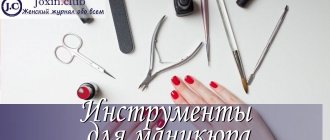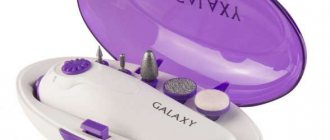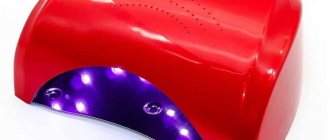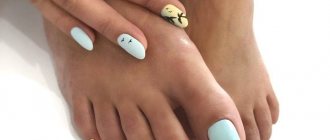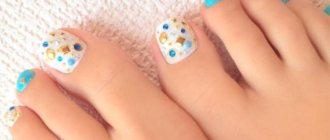What requirements for sterilization does SanPiN impose?
Requirements for cleanliness and processing are established by sanitary rules that replaced SanPiN - SP 2.1.3678-20. They say that all manicure and pedicure procedures that can damage the skin or nail plate must be performed by the master with sterile instruments.
Alternatively, a disposable instrument can be used. These are, for example, abrasive attachments for base files and buffs or sand caps. They are thrown away after each client.
According to sanitary rules, disinfection is carried out in stages. And we must not confuse disinfection and sterilization. The first refers to chemical cleaning, which is used to carry out primary processing. Sterilization of manicure instruments according to SanPin involves the destruction of all dangerous microorganisms.
Types of cutters
Cutters for hardware manicure are divided into several types:
- Corundum cutters are made of synthetic ceramic chips, reminiscent of acrylic. They do not have sharp corners or edges, and the particle structure is not rigid. They gently remove sensitive skin. They leave no scratches behind. When interacting with corundum material, fabrics will not become peeling. This attachment is recommended for treating the side areas around the nails. Its service life is about 2 months.
- Diamond cutters contain diamond dust, making them the most accurate and versatile. They are suitable for medium to hard skin. Due to their high precision, they can be used in jobs that require precision. Diamond cutters are used for design, correction and extension of acrylic nails. This cutter will last up to 3 – 4 months.
This is what diamond cutters for hardware manicure look like - Ceramic cutters are suitable for delicate processing. The corundum particles included in their composition do not damage the skin. They have a self-regenerating effect and do not cause allergies. These cutters are suitable for processing pterygium and cuticle. The service life for them is about 2 months.
- Carbide cutters are traumatic, so they should not be used on natural nails. When working with artificial nails, they allow you to perform extensions, design and correction, as well as piercings and indentations for rhinestones. In the case of natural nails, they can only be used to remove ingrown toenails and calluses. Carbide cutters last from 4 months.
- Pomegranate cutters consist of garnet crumbs. They belong to a new generation and allow you to get the job done without damaging the skin. These cutters are recommended for novice cuticles for processing thin cuticles. They will last about 3 months.
- Silicon carbide cutters are made from rough materials, but are gentle on the skin. They can only be used on rough skin. It is recommended to remove calloused areas with these cutters. They can last about 6 months.
- Silicone cutters They are a mixture of silicone with abrasive particles. They are mainly used on extended nails. On natural nails, they can be used to remove the glossy layer before adding extensions. Such attachments last 4–5 months.

- Steel cutters are made from high quality alloys. They are convenient for removing the weakened layer of the nail, working on the nail plate and keratinized skin. With this device you can correct extended nails and eliminate callous formations. The service life is about 6 months.
What stages does complete disinfection include?
To achieve proper sterility of the instrument, processing is carried out in four steps.
Mechanical cleaning
After each client, instruments are washed under running water. Pre-cleaning allows you to wash away skin particles and dust from filing the nail plate from smooth and abrasive surfaces.
Treatment with a disinfectant
The instruments are placed in a bath or box with a disinfectant solution. For disinfection, drugs with antiviral and antifungal properties are used. The exposure time is selected according to the instructions for the composition. Concentrates are diluted in proportions corresponding to treatment for hepatitis. After disinfection, the instruments are washed again with water.
Sometimes, instead of a solution, disinfectants are used in the form of an aerosol, for example Bacillol, Estilodez, Miroseptic or wiping. This helps to quickly disinfect surfaces.
Pre-sterilization treatment
Pre-sterilization treatment or chemical sterilization is often combined with disinfection. For cleaning, similar disinfecting solutions with antiviral and sporicidal effects are used, where the instruments are immersed for a specified time.
Sterilization
Washed and dried instruments are placed in a craft bag with a special indication and sent to the sterilizer. Temperature and time are selected based on the material.
All stages of sterilization of manicure instruments take at least 1.5 hours. Therefore, the master should always have disinfected kits in stock. Clean instruments are sent to the UV cabinet or stored in the same craft bag that is opened in front of the client.
Classification of cutters by purpose
| Name of cutter | Purpose |
| Reverse cone | Necessary for processing the free edge of the nail. With its help, you can file your nails to the same length without leaving nicks or unevenness. This attachment helps to level the tip of the nail, smoothing out differences in height. |
| spherical bur | Designed for treating the skin around the nail. Thanks to its spherical shape, the nozzle allows you to trim off rough skin without affecting the nail plate. Indispensable for eliminating growths and cracks. |
| Cylindrical nozzle | Nozzles of this shape are thin and wide. They are used to remove gel polish and correct nail designs. In addition, they are most convenient for shortening the length of the free edge of the nail. |
| Drum | Allows you to remove calloused, rough skin. It can be used to trim thick nails. It is also used in hardware extensions. |
| Polisher | This nozzle resembles a rounded cone. It can be soft, medium or rough in terms of hardness. The tip is made of plastic or silicone with a polymer coating. Used to smooth out roughness on nails and add shine. |
Basic rules of disinfection and sterilization
When disinfecting and sterilizing instruments, follow a few simple but important rules:
- use broad-spectrum solutions that simultaneously destroy viruses, bacteria and fungi - for example Multidez, Optimax, Aktibor, Nanodez, Almadez, Glutaral, Sidex and others;
- use products that allow you to quickly process instruments, do not damage medical and stainless steel, dissolve well in water and are easily washed off;
- follow the recommended concentration and soak time in the solution, and also make sure that it completely covers the instruments - this will make disinfection effective;
- be sure to rinse off the remaining disinfectant solution with running water and dry the instruments before sterilization so that lime stains and rust do not appear on them;
- Choose a sterilization method and equipment that matches your loading and processing needs, then you can disinfect all instruments and have the required supply of kits.
Operating principles of distance learning courses
Video lessons are aimed at people who, due to their busy schedule, do not attend such lectures on a regular basis. The advantages of such training:
- You choose the place yourself. For lessons, you don’t need to go to the other side of the city, leave work or look for a babysitter for your child. You can watch video lessons anywhere: in the kitchen, in a cafe, in public transport. Availability of Internet and desire is a priority.
- You decide the time yourself. Today you watch two videos at once, and tomorrow you can take a day off. There are no strict restrictions.
- Minimizing stress. There is no teacher standing over your head with a pointer. Calmly review the lessons, take notes, try them in practice.
- Price policy. The cost of such a course is cheaper than similar ones that include practical training. The money saved can be spent on purchasing tools.
There is only one drawback - you will have to train on your own.
What are the sterilization methods?
To completely disinfect manicure instruments, different types of equipment are used, which differ from each other in the method of exposure.
Steam in autoclave
Suitable for metal, glass, heat-resistant polymers. For processing, hot saturated steam under high pressure is used, the temperature of which is about 1300C. The process lasts no more than 15-20 minutes, which saves time and is convenient when working in a salon with very high traffic.
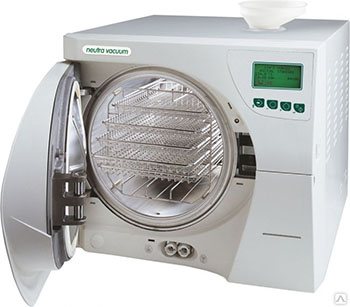
The disadvantages of the equipment include the price - good autoclaves cost about 80-100 thousand rubles, are large in size and operate on distilled water.
Thermal in dry heat
Used for tools that can withstand high temperature processing. Sterilization takes place under the influence of dry steam heated to 150-2500C. The calcination procedure takes from 30 minutes to 2 hours.
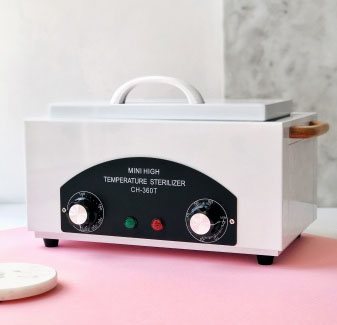
Dry fires are compact and affordable. When choosing equipment, you need to ensure that the model allows sterilization in craft bags and that they do not burn.
Ultraviolet in a UV sterilizer or washer
Used for instruments made of different materials, including those that do not allow heat treatment. The bath is filled with a cleaning solution. Dangerous microorganisms are destroyed by high frequency ultrasonic waves.
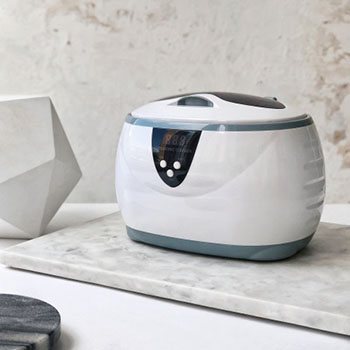
UV washers are convenient. They can be used not only for sterilization, but also for storing finished instruments. The disadvantages include the fact that ultrasound cannot cope with HIV and hepatitis viruses.
Airy in glasperlen
Suitable for metal only. The treatment is carried out by heating quartz balls with hot air, into which the tool is immersed. The impact is short-term, lasting about 20 seconds.
Glasperlens allow sterilization to be carried out very quickly. However, they are limited in use and require control of the treatment area, since immersion may not be complete.
What you need to buy to properly disinfect and sterilize instruments
A master working in a salon or at home needs a set of tools, consumables and equipment for sterilization.
The kit should include:
- disinfectant for primary cleaning and pre-sterilization treatment of instruments in solution;
- sterilization bags, preferably with an indicator that changes color during processing;
- special equipment - a dry heater for disinfection or an ultrasonic cleaner for cleaning and storing files, buffs and other tools that cannot tolerate high temperatures.
DO NOT FORGET
antiseptics for hand disinfection and surface treatment products. For manicures and pedicures to be safe, everything needs to be cleaned.
At the Sterille Store you will find antiseptic and disinfectants, craft bags and sterilization equipment. You can buy everything you need for work from us. We deliver orders throughout Saratov and ship to other regions.
Types of attachments required for hardware manicure
The attachments for the apparatus used for manicure vary not only in abrasiveness. They have different tip diameters and rotation speed limits and are designed to perform a variety of operations.

Each nozzle has its own purpose
Modern manufacturers of manicure machines offer many different attachments. They can be divided into three large groups, depending on their main purpose:
- filing and shaping nails;
- polishing the cut and surface of the nail plate;
- final polishing and shine.
In addition, there is a narrower division of nozzles according to other criteria.
